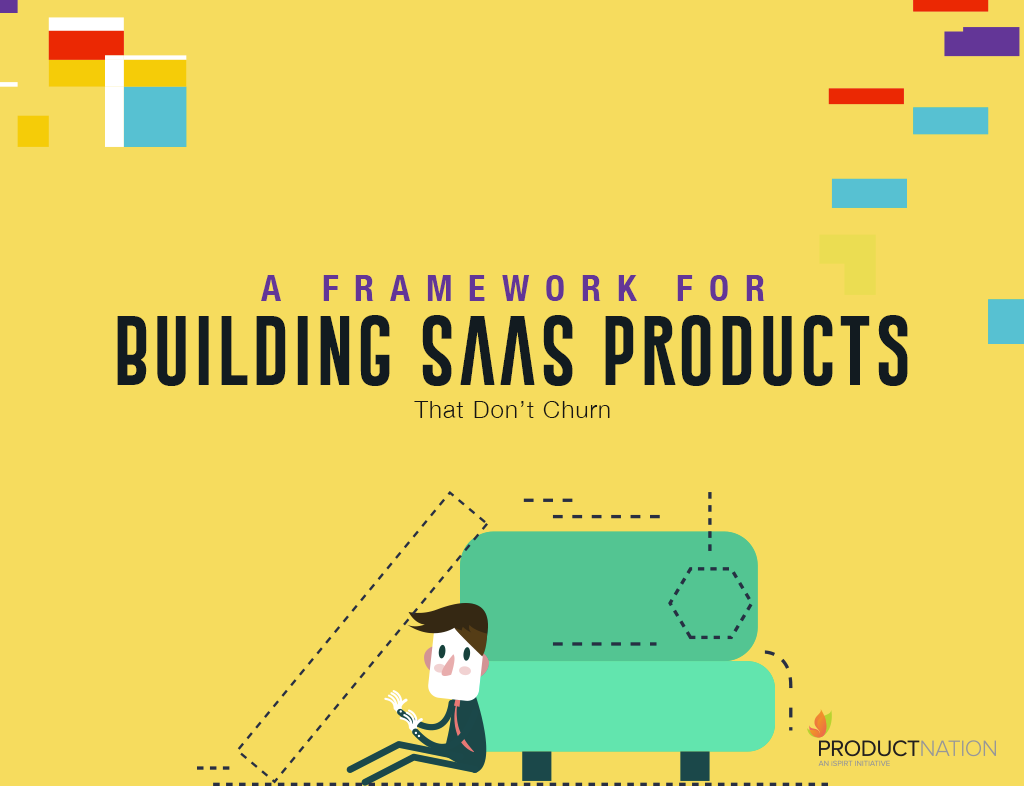When you say “reduce SaaS churn”, most people will immediately imagine tactics like drip email campaigns, great onboarding, customer marketing, gamification and automated alerts when users show signs of leaving. But this post is not about tactics. This post recognizes that users are smarter than any of the cute tricks we can come up with, and it attempts to get to the core of why there are some products that business users keep paying for, and others they discard.
If you’re a founder or product manager, I’ll encourage you to think deeply about this stuff, versus thinking about your next “growth hack”.
Products on which company processes are based
There are products on which organizational functions are dependent and processes are built. These are usually CRMs, Marketing Automation, HR software and Support software. The defining features are
- they’re used by decision makers for reporting purposes and are often used to track teams’ KPIs and goals
- they’re used to run day-to-day functions of the team and organization, for example, the process of applying for and approving employee leaves, or changing the stage of a sales opportunity
- some people are logged in to the system during their entire working day
- others log in once in a while to complete certain tasks
- the system collects and retains valuable data that companies are not comfortable losing
Some observations about these products are
- the sales cycles are usually longer than a month
- customers will rarely buy these products without first being sure of the processes that are dependent on them
- they need extensive API support and data integrations, because the data they collect becomes more valuable once combined with other data
- heavy cross-functional training is required after the sale, and the product takes the blame if a customer org. doesn’t adopt and use it to the best of its capability
- you need a lot of quality documentation so that you’re not overburdened with support tickets
An important note about products used by decision makers
When I started out at VWO a few years ago, the most important metrics were “free-trial signups” and “paid customers” (about 95% were self-service monthly subscriptions). Back then, Google Analytics (GA) was our most important source of data. We recorded free-trial signups, upgrades to a paid subscription and revenue in GA so it was what we looked at everyday.
In the past couple of years, we’ve started serving more mid-market and enterprise customers. Because of this, a few things have changed:
- The average deal size has increased from $x00 to $x0000
- The quality of free-trial signups matters as much as the quantity
- A large amount of revenue comes from payments made through bank-transfers and other offline methods
- “New MRR” is now more important than “new customers”
Because of all these changes, Google Analytics isn’t important anymore. Instead, the big decision are made after looking at reports in the CRM and our database, where all lead/deal/customer/revenue data sits. Through this shift I observed how when businesses evolve, the metrics that matter to them change, and this has a domino effect on the SaaS products that fall in and out of favor.
Now here’s another interesting anecdote: VWO has a large number of ecommerce customers. For the majority of these businesses, Google Analytics is the “source of truth”, so we simply had to build an integration with GA. In fact, we once lost a big customer because their VWO test reports didn’t agree with their GA data (completely possible and for good reasons, read this to understand why). The internal VWO champion tried to fight it out and explain the difference to management, but we lost the customer after some time.
So my point is this… it is well worth your while to build capabilities that will be used to make the important decisions, and if that’s not possible, then align your product with the primary reporting tool used by your target market.
Products that give results with minimal effort after initial setup
Some of these are:
Lead generation pop-ups, sidebars- Landing page software (specially when tied to on-going PPC campaigns or SEO keywords)
- Retargeting software, like Perfect Audience and AdRoll
- Exit intent pop-ups, almost always tied to lead generation
- Personalization and behavioral targeting
- Email automation like Vero and Intercom
While you’re building a product that keeps producing results with minimal interference, give a thought to how you can add public branding for that little bit of ‘virality’.
It’s also important to note that products tied to performance will quickly be removed when that performance isn’t enough. In this case, the product itself may be great, but it is dependent on something else working. For example, landing page software gets abandoned when the Adwords campaigns it was used for aren’t working out.
Products that monitor and provide reports and alerts on a recurring basis without needing additional effort
Few that come to mind are
- Mention (social mention tracking, we’ve had it on for at least a couple years… rarely log in but open almost every daily email report)
- Server Density (server monitoring)
- SEOKeywordRanking (SEO keyword rank tracking; old school interface and not updated in a long time, but am sure its creator Will Reinhardt doesn’t need to work anymore)
While building your product, talk to users about the data they find most useful and want to look at everyday, or see what parts of your reports are accessed most often, then send that data out as daily/weekly emails. It becomes a part of users’ morning routine to check the emails and note/discuss/alert if something’s going right or wrong.
Products that enable data flow between different systems
Think Zapier, PipeMonk, Jitterbit and Informatica. Admittedly, data integration is more of an enterprise problem, but the good thing is that once put in, they’re very difficult to remove. That’s because they’re usually implemented after someone high enough has identified the need to have all the various data silos talking to each other, and that robust decisions can’t be made without a complete picture of the issue at hand.
Case study: Hubspot
- Processes are based around the product? Yes, for marketing and sales
- There’s someone almost always logged in? Yes, marketing
- Managers use the product to report on performance? Yes, primarily marketing qualified leads, then customers and revenue
- Product collects and retains valuable data that customers are not comfortable losing? Yes
- Has components that produce results without needing on-going effort? Yes, lead-gen landing pages, website personalization, automated rule-based emails
- Components that monitor and alert automatically? Yes, primarily alerts to sales owners about lead activity, and other alerts around social media, monthly/quarterly goals, etc.
- Components that enable data flow between different systems? A well maintained and documented Salesforce connector, otherwise they have a platform for developers
As you can see, Hubspot is doing pretty well in minimizing churn. It seems to me that would be the case with most large, successful SaaS products. In fact, understanding the reasons why organizations keep paying for products is why large successful software are large and successful, as compared to just large.
I hope you’re able to use this post as a framework to think about what makes products stick, and apply those principles to the products you’re managing or building. Also, do you have anything else I can add to this? For some reason it seems to me the list is incomplete.
Guest Post by Siddharth Deswal, Lead Marketing at VWO.



 She asked me for a few pointers, and I jotted down a five point list I’ve distilled from my time as a content marketer at Freshdesk. Her experience is as a sales professional, and this gives her a unique vantage point of the system, and I thought this would be a good lens to look at the process through.
She asked me for a few pointers, and I jotted down a five point list I’ve distilled from my time as a content marketer at Freshdesk. Her experience is as a sales professional, and this gives her a unique vantage point of the system, and I thought this would be a good lens to look at the process through. According to
According to